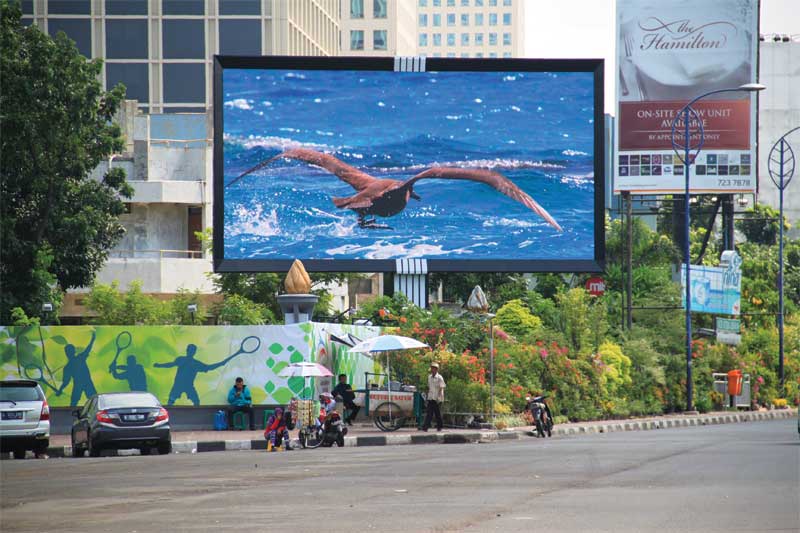
LED screens have become the industry standard for digital billboards because they are ideal for displaying moving content from a distance.
Photo courtesy Daktronics
Developing a deployment process
As mentioned, to ensure a successful deployment, it is important to clearly lay out the complete process for development, including the following steps.
Strategic analysis
This is the phase when a digital signage audience’s demographics are broken down on the basis of age, education and socioeconomic factors, to help define a clear approach to content and messaging. The specific products, services and/or events that will be promoted by the screen will need to be listed, along with the relevant attributes of the advertiser(s).
This way, the message narrative—i.e. the specific mix of digital content the audience will respond best to—can be developed. It might include product ads, community information and event highlights relevant to specific target groups.
Design
The design of a digital sign is also crucial to maintaining or improving brand identity. A screen that is not well-suited for a certain environment can hurt more than it helps.
The design development phase should involve location planning, including a complete legibility analysis based on the sign’s visual context, local sign code limitations and average vehicular/pedestrian speeds. Choosing the size of the screen, for example, may be a balancing act between optimal legibility and what is permitted by existing sign bylaws.
Another factor is how the screen will fit into the larger environment, including the physical landscape and the overall architecture of the site. This will inform illumination levels and other elements of the sign’s functionality.

Legibility is often an important issue when screens are viewed from vehicles moving at high speeds.
Photo courtesy Bell Media
Content development
Designing strong content for digital signage is a comprehensive process, combining multiple technical areas. The most important is the content management system (CMS) software.
In fact, no area has seen more innovation than CMS development. There are many options available today that focus on specific needs, such as ease of inputting information, the ability to change content based on external factors and convenient access to special effects.
It is important to keep the realities of the outdoor environment in mind. Many of the special effects digital signage is capable of are lost on viewers passing by in vehicles at high speeds. Instead, messages need to be simple. Only at the pedestrian level can more complex content prove effective on an outdoor screen.
Similarly, active and passive interactivity may be integrated for pedestrians, such as facial recognition software. Such features are less relevant with a screen for vehicular audiences.
The dynamic nature of digital signage is its best attribute, yet often the most underused. An outdoor screen should be seen as a tool for experimenting with different messages, monitoring the results, analyzing changing conditions and reacting to them.





